In 2007, Steve Jobs changed the name of Apple Computer Inc. to Apple Inc. and the focus shifted from Macs to mobile devices like the iPhone and iPad.
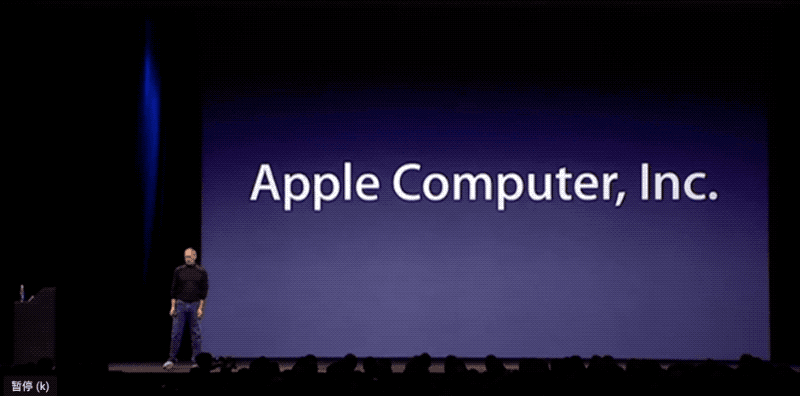
At that time, the Macintosh, which had made Apple's name, also receded into the background.
However, with the release of the M1 family of chips, the introduction of ultra-high power efficiency has also brought the Mac back to center stage after a complete shift to Arm in recent years.
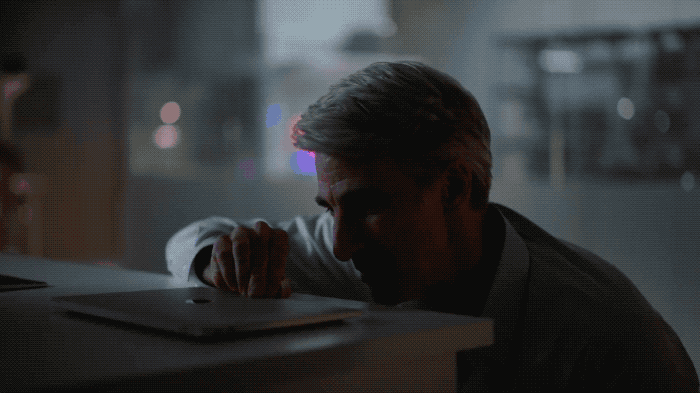
▲ Craig Federighi, Apple's VP of Software, exclaimed twice at the launch event about the M-chip: How cool is that?
In this way, the Mac, which has ushered in a new era of Arm, evokes the "Apple computer" era that many people once had.
At WWDC, which ended this year, the M2, as expected, and the newly designed MacBook Air really stole the show from iOS 16, iPadOS 16, macOS 13, and a host of other software.

▲ WWDC is over and all I remember is the newly designed MacBook Air
Much of the discussion after the conference also focused on the hardware, with a new core design and a new process for the M2, which completely brought Apple computers into the Arm era.
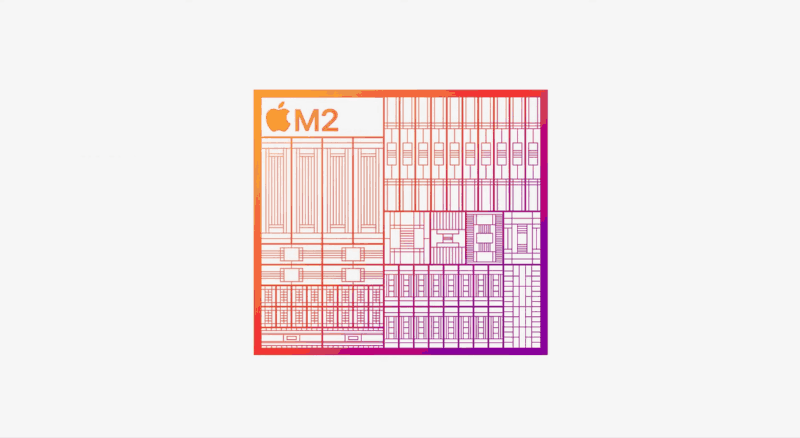
While the MacBook Air, the most expensive Air series ever, still features an 8GB+256GB combo that lags behind Windows PCs in its price range, there's still a lot of buzz among wait-and-see users about how to spend their limited budgets on the 'cutting edge'.
Should I upgrade the memory or the SSD capacity? I'm sure this is a question that many Mac users struggle with during the purchase process.
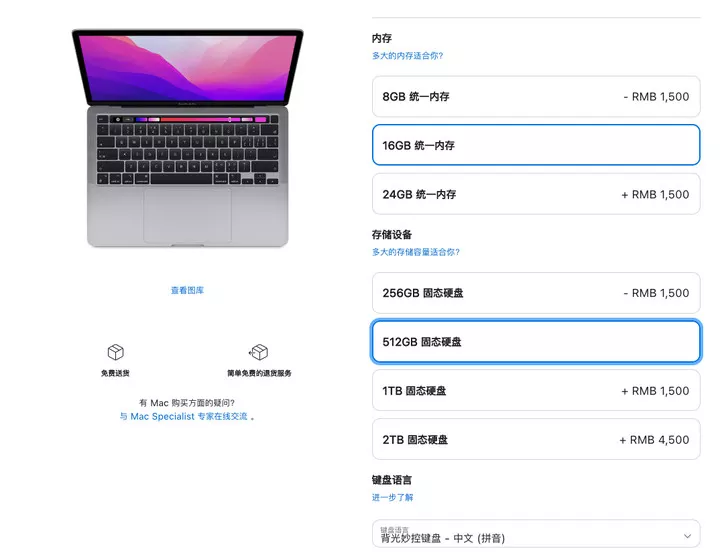
▲ Same $1,500 price increase, what's your choice?
Thoughtfully, Apple's official website uses an even upcharge of $1,500 for both doubling the memory and doubling the storage.
In Apple's measurement system, memory is just as important as storage, there is no higher or lower or more expensive.

In the past, when making Mac consumer recommendations, I've been more inclined to double my limited budget on memory - after all, storage can be external or in the cloud, so there's a lot of flexibility, and $1,500 is enough to buy two 1TB high-speed removable drives.
The memory that has been packaged on the motherboard for a long time is difficult to expand by any reasonable means, not to mention the unified memory architecture used in the M-chip, which makes expansion even more difficult, so it's better to spend $1500 to get it all in one step.

▲Amazing image via: ifixit
Only, the M2 MacBook Pro may have completely changed the focus of the memory priority upgrade.
During our tests doing M2 MacBook Pro videos, the M2 MacBook Pro lagged far behind the M1 MacBook Pro in decompressing a 13GB zip (7z) archive (containing small files, large files, and a clip project).
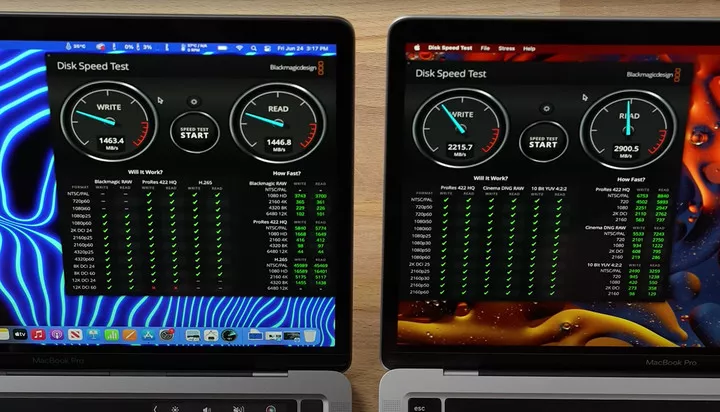
▲ Left: M2 MacBook Pro, Right: M1 MacBook Pro Image from: MaxTech
In addition, YouTuber Max Tech directly tested the read and write speeds of the standard 256GB versions of the M2 and M1 MacBook Pro with BlackMagic and found that the M2 MacBook Pro was half as fast.
The 512GB, 1TB version of the MacBook Pro, on the other hand, is unaffected and is on par with the M1 MacBook Pro.

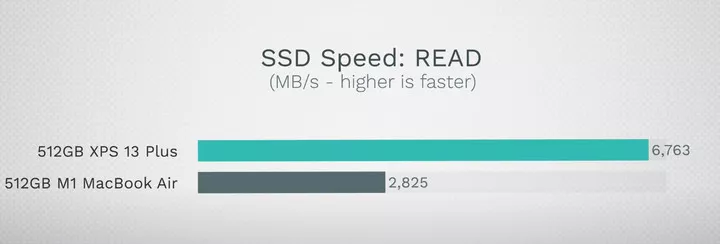
▲ Dell XPS 13 Plus vs M1 MacBook Air SSD Read/Write Speed Comparison Image from: MaxTech
The original M1 MacBook Pro's SSD isn't exactly fast, being close to PCIe 3.0, so cutting it in half would be a bit unworthy of the Pro name.
Today, many Windows laptops are already using PCIe 4.0 SSDs for a better experience. The drive's read and write speeds are already well beyond those of the M1 MacBook Pro.

Remember that at the MacBook Pro 14/16 launch last year, Apple marked the new device with a new SSD that spikes storage speeds to 7.4GB/s directly on the Keynote.
In subsequent real-world tests (also for BlackMagic), only capacities over 4TB will reach such peak write speeds, with the standard 512GB and high 1TB writing at roughly 4600MB/s to 5800MB/s, which is probably at the level of high-speed PCIe 4.0.
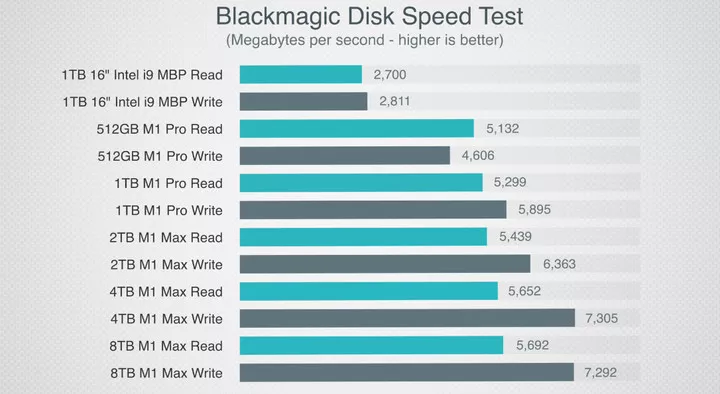
▲ It's always right to pull the configuration to the top Image from: MaxTech
The MacBook Air/Pro pulled ahead with a high-speed SSD before solid-state was commonplace in Windows notebooks.
By the M2's MacBook Pro 13 (256GB), its hard drive speeds were already lagging behind Windows laptops by a significant margin - less than a decade, and the tide is turning.
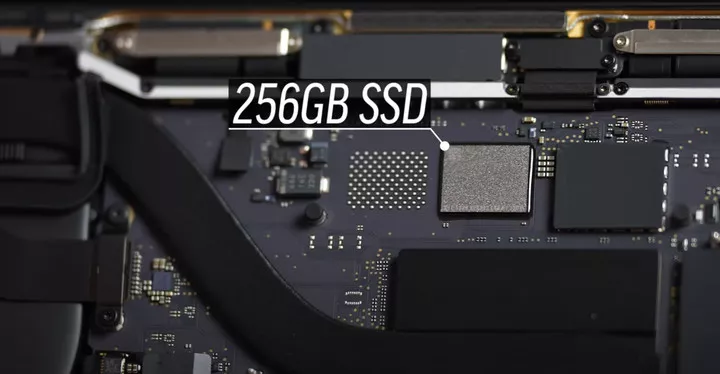
▲ An empty plate space is reserved for imagination Image from: MaxTech
And to find the reason for the M2 MacBook Pro's storage slowdown, Max Tech and Create Tech took it apart and compared it to the M1 MacBook Pro.
In the original SSD socket, the M2 uses just one NAND flash particle, while the M1 uses two 128GB NAND flash particles.
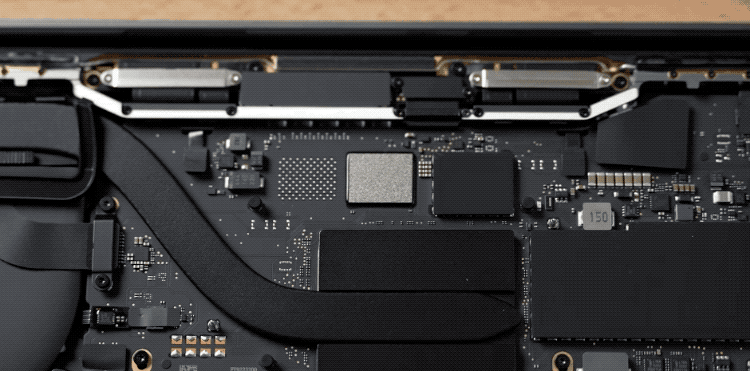
▲ Don't Blink Image from: MaxTech
Such an approach is most likely the reason why the M2 MacBook Pro storage has been dramatically slowed down.
The principle is actually similar to that of dual-channel and single-channel memory, with more NAND storage particles having more channels and naturally higher data throughput and speed.
And for the first time, a configuration with just one NAND flash particle is available in a MacBook Pro product.
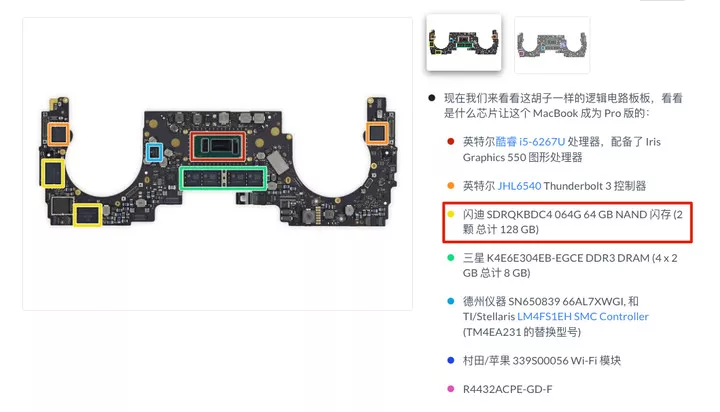
▲ 128GB are made up of two 64GBs Image from: ifixit
In checking iFixiit's MacBook Air/Pro teardown tutorials from 2016 to 2021, both the 128GB entry version and the 1TB high end, Macs are paired with at least two NAND flash particles on the motherboard to achieve normal and reasonable speeds.
A single NAND flash memory particle configuration can help reduce costs somewhat. But for the MacBook Pro, which doesn't cost much, such savings can significantly impact the experience.
Today, the M2 MacBook Pro has a write speed of 1400MB/s, which may not be as noticeable in many light experiences as it is in the numbers.
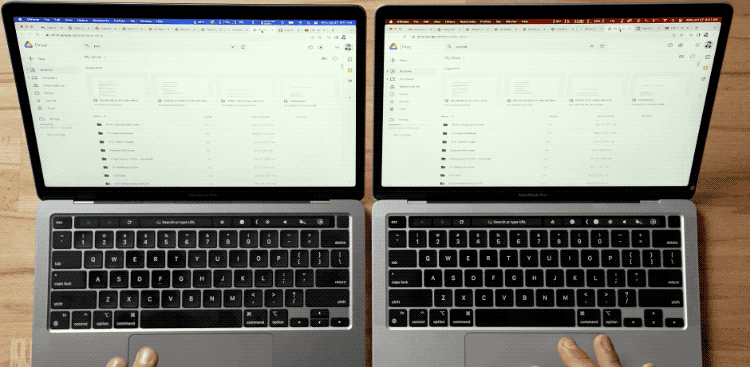
▲ The M2 MacBook Pro (left) multitasks frequently and there is a delay in loading web pages, which is acceptable Image from: MaxTech
But the M2 MacBook Pro has only 8GB of memory, so when it's full and the SSD is used as virtual memory, there's a world of difference that can dramatically affect normal use.

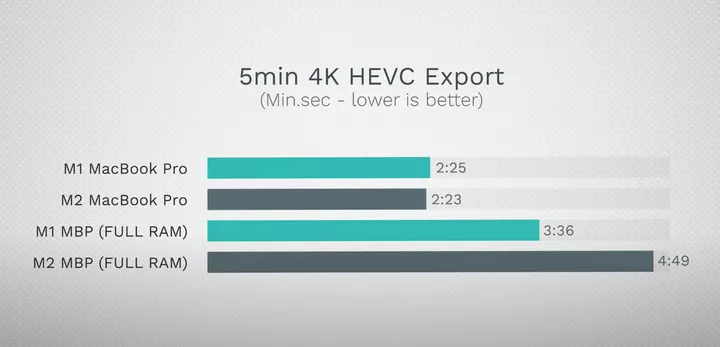
▲ M2 MacBook Pro I won't win as long as the memory is full Image from: MaxTech
In testing, the M2 MacBook Pro lagged significantly in both exporting photos in Lightroom and exporting videos, and even crashed outright when composing HDR photos in Photoshop.
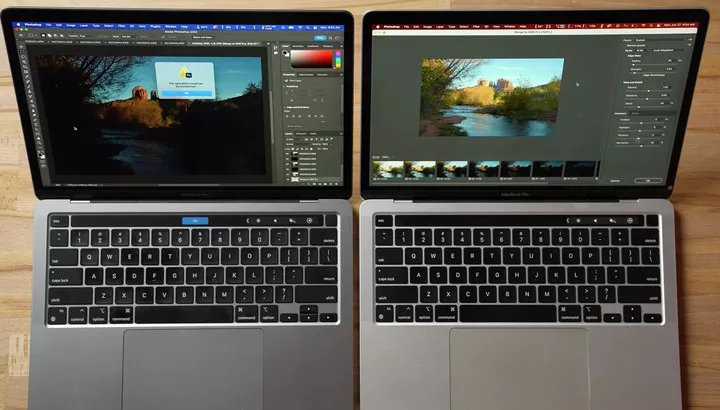
Admittedly, the M2 onboard makes the MacBook Pro extremely competitive, but that, coupled with low-speed storage that's already out of step with mainstream standards, makes it hard to justify the near $10,000 price tag.
For now, the storage drop is limited to the M2 MacBook Pro 256GB standard, with the 512GB premium version unaffected. Whether this is the case with the new MacBook Air, which will be available in July, is unknown at this time.
Those who are ready to get their hands on a MacBook Air first might want to wait and see the first wave of feedback, or just upgrade to 512GB capacity to circumvent the storage slowdown.

When you add in the $1,500 memory upgrade, the new MacBook Air starts at $12,499, and it seems like the MacBook Pro 14 2021 smells even better.
After the M-chip era, there are corresponding scaled-down versions of the M1 and M1 Pro in the lower MacBook Air/Pro devices, which can be interpreted as the i3, i5, and i7 versions of Apple's M-chip.
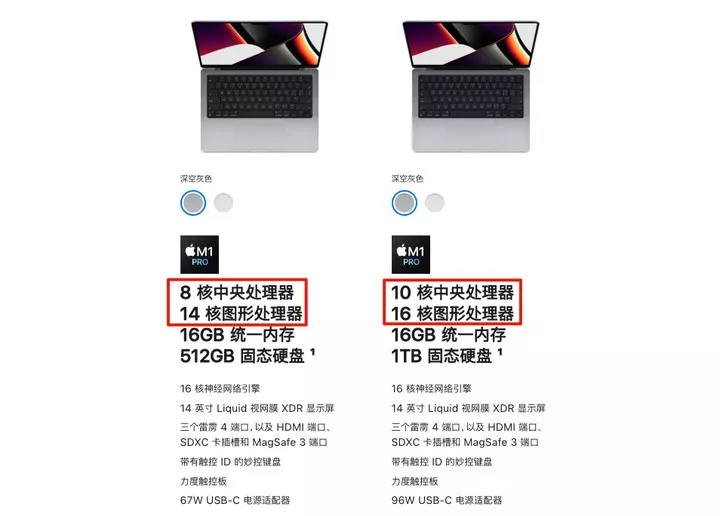
Technically speaking, such different configurations don't make a world of difference to the experience, it's nothing more than an 85 to 95 point difference. The same is true for higher capacity storage (2TB, 4TB), it's the upper limit that is raised.
The M2 MacBook Pro's storage speed reduction is instead a dip in experience, bringing the original base model (8GB+256GB) 75+ points below the pass line and reducing it to a high-end netbook, which it really shouldn't be.
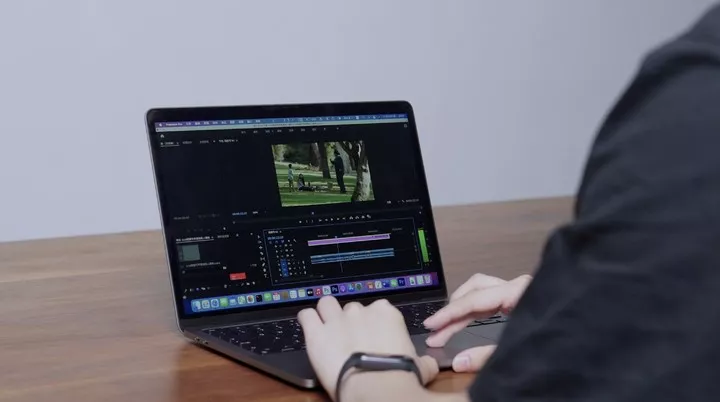
Whether the new MacBook Air that follows circumvents this, or whether the subsequent MacBook Pro 13 will retain this configuration, will have to wait for Apple's next move.
For the average user, it's best to avoid the M2 Mac with 256GB of storage for now.